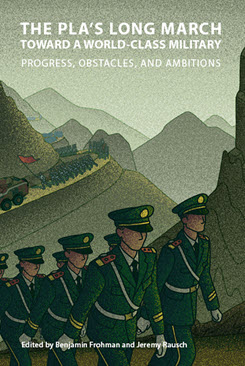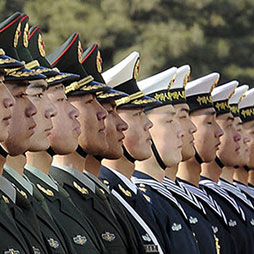Book from the People's Liberation Army Conference
China’s Future World-Class Navy: Ends, Ways, Means
This chapter identifies the PLA Navy’s 2035 and midcentury modernization goals, examines its progress in building requisite world-class capabilities, and assesses its current capability shortfalls and efforts to overcome them.
Executive Summary
MAIN ARGUMENT
While there are multiple ways to measure a “world-class” navy, what matters most are China’s own criteria informing its efforts toward that end. Capabilities-based benchmarks are a widespread indicator of a navy’s level. PLA leadership appears focused on developing the capabilities that improve the PLA Navy’s proficiency to execute specified missions at the operational level of war. China’s 2019 defense white paper provides a roadmap for the PLA Navy to become the world’s most capable navy regarding these missions. Only when the PLA Navy successfully integrates the means required to support the full range of these missions will Beijing perceive that it has reached world-class status. By sowing doubt about the PLA Navy’s capability to execute these missions, Washington can downgrade party-military leadership perceptions about China’s world-class naval status and instill restraint.
POLICY IMPLICATIONS
- Full world-class status is reserved for when the PLA Navy establishes a global navy capable of protecting Chinese interests worldwide as instructed. On its current trajectory, the PLA Navy is likely to be capable of fully executing such operations by midcentury.
- If Beijing is unable to effectively integrate advanced technologies into tactical operations to enable the building of its desired fleet, then the PLA Navy will question its ability to surpass the U.S. Navy and achieve its top-tier objective.
- If the PLA Navy is unable to access suitable overseas ports for ship repair and armament resupply, its combat power projection overseas will be limited, thereby degrading the PRC’s ability to use the PLA Navy as a tool of influence overseas and potentially slowing its progress toward achieving its world-class objectives.
Christopher H. Sharman is the Director of the China Maritime Studies Institute at the U.S. Naval War College.
Andrew S. Erickson is a Professor of Strategy at the China Maritime Studies Institute at the U.S. Naval War College.
Note: The views expressed here are the authors’ alone. They thank conference participants and anonymous reviewers for valuable inputs.



 The PLA's Long March toward World-Class Status
The PLA's Long March toward World-Class Status
